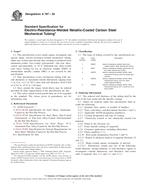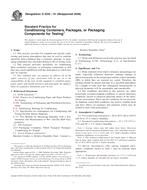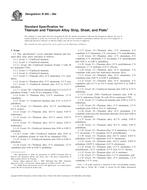1.1 This guide covers the definition of representativeness in environmental sampling, identifies sources that can affect representativeness (especially bias), and describes the attributes that a representative sample or a representative set of samples should possess. For convenience, the term “representative sample” is used in this guide to denote both a representative sample and a representative set of samples, unless otherwise qualified in the text.
1.2 This guide outlines a process by which a representative sample may be obtained from a population. The purpose of the representative sample is to provide information about a statistical parameter(s) (such as mean) of the population regarding some characteristic(s) (such as concentration) of its constituent(s) (such as lead). This process includes the following stages: (1) minimization of sampling bias and optimization of precision while taking the physical samples, (2) minimization of measurement bias and optimization of precision when analyzing the physical samples to obtain data, and (3) minimization of statistical bias when making inference from the sample data to the population. While both bias and precision are covered in this guide, major emphasis is given to bias reduction.
1.3 This guide describes the attributes of a representative sample and presents a general methodology for obtaining representative samples. It does not, however, provide specific or comprehensive sampling procedures. It is the user’s responsibility to ensure that proper and adequate procedures are used.
1.4 The assessment of the representativeness of a sample is not covered in this guide since it is not possible to ever know the true value of the poplulation.
1.5 Since the purpose of each sampling event is unique, this guide does not attempt to give a step by step account of how to develop a sampling design that results in the collection of representative samples.
1.6 Appendix X1 contains two case studies, which discuss the factors for obtaining representative samples.
1.7 This standard does not purport to address all of the safety concerns, if any, associated with its use. It is the responsibility of the user of this standard to establish appropriate safety and health practices and determine the applicability of regulatory limitations prior to use.
Product Details
- Published:
- 03/10/2003
- Number of Pages:
- 11
- File Size:
- 1 file , 94 KB


